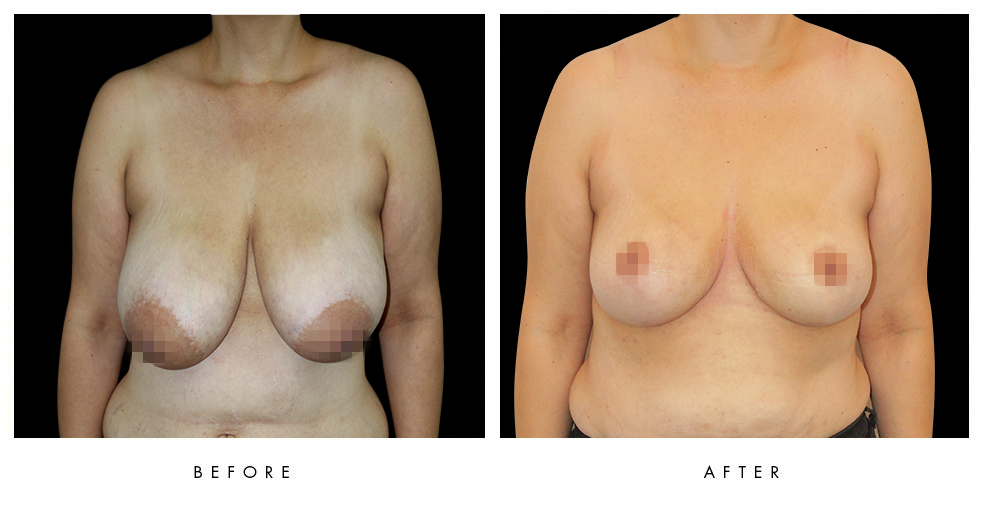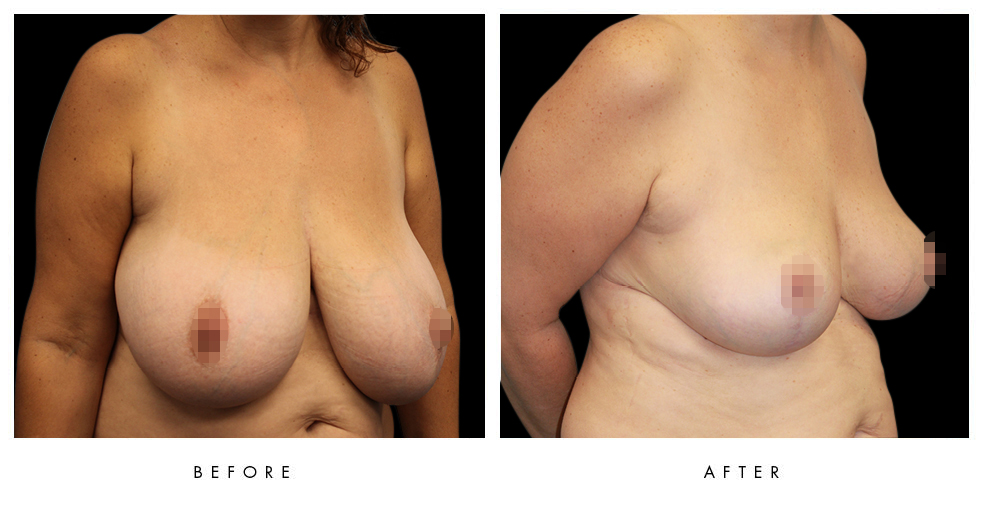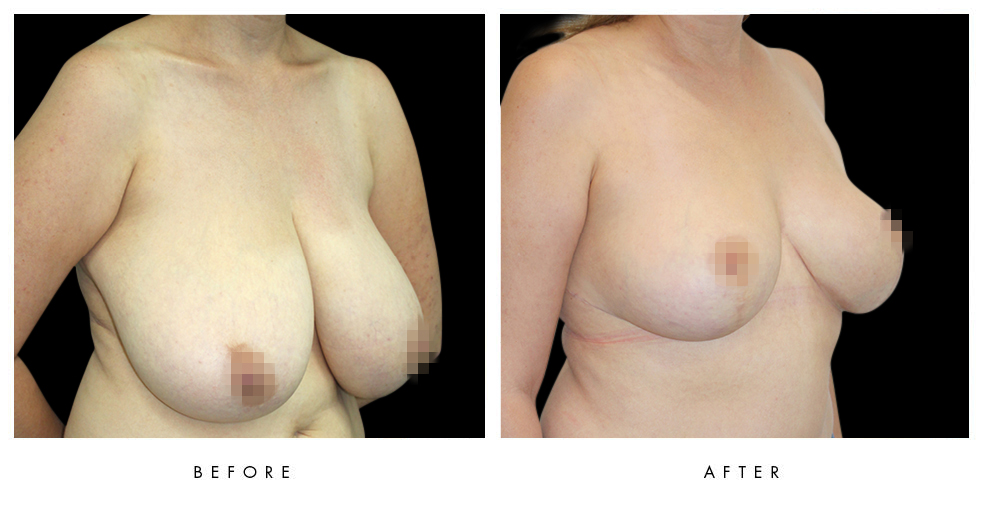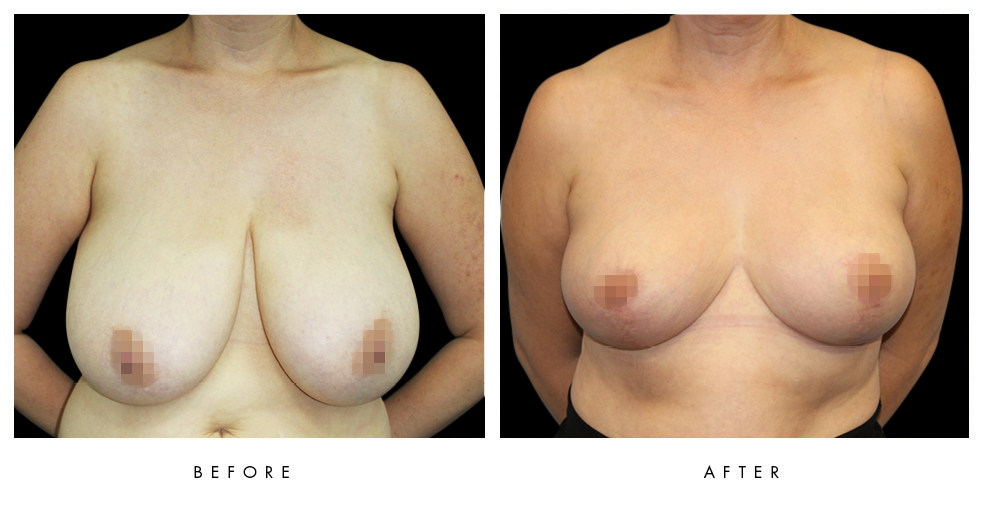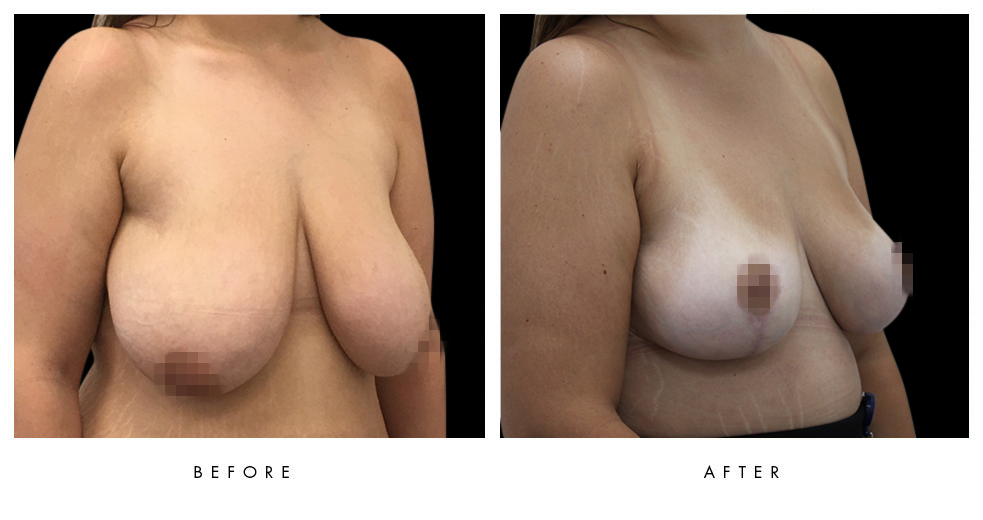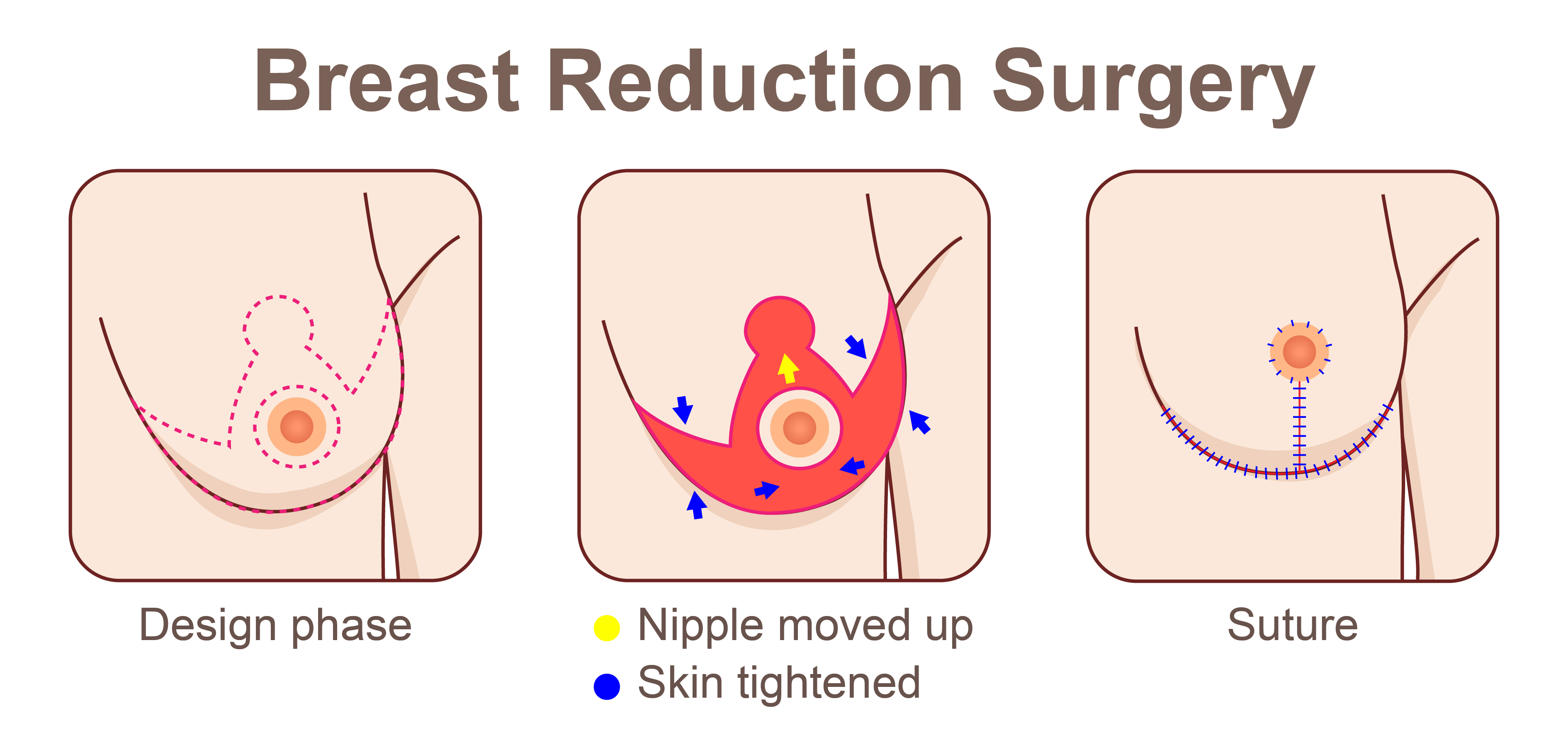BREAST SURGERY /
Breast Reduction
Table of Contents
What is a breast reduction?
Breast reduction is done by removing excess breast tissue, fat and excess skin as well as shaping the breast tissue in order to lift the breasts and make the breasts more proportionate (usually, the areola grows over the years and is made smaller during breast reduction surgery).
Advantages of Breast Reduction
Having large breasts can be difficult both physically and emotionally. Sometimes, women with large breasts can suffer from back, shoulder and neck pain as a result of the weight of their breasts. Particularly during hotter months, some women suffer from a rash in the area under their breasts and this can be difficult to treat. It can be hard to find properly fitting clothing and many women avoid going to the beach and experience general discomfort. Breast reduction surgery also lifts the breasts.
Who is a good candidate for Breast Reduction?
- If you feel that your chest is too big and this makes you feel self-conscious or affects your self confidence.
- If your chest limits your physical activity.
- If you suffer from back pain, neck pain or shoulder pain as a result of the weight of your chest.
- If your bra leaves marks on your shoulders.
- If you suffer from a rash under you breasts.
Breast Reduction Consultation
During the consult we will get to know one another and we will discuss:
- The reasons you are interested in undergoing breast reduction, what expectations you have, what results you are looking to achieve and what can be done realistically to improve the appearance of your breasts. (By coordinating expectations, we can increase your satisfaction and alleviate any anxiety you may have regarding the procedure.)
- Your medical history, including any drug sensitivities you might have or what medication, if any, you take regularly and whether or not you smoke cigarettes.
- Any family history of breast cancer.
- During the consultation, you will undergo a breast exam. You will receive a comprehensive explanation regarding the procedure, where the scars will be located and an explanation of the recovery process.
- It is natural to feel anxious or excited prior to our consultation. Understanding the process will help reduce anxiety. You are welcome to ask any questions you may have and discuss any worries during the consultation.
How do I prepare for the procedure?
- We ask that you have blood tests prior to the procedure.
- In some cases, you will be asked to have a breast ultrasound or mammogram.
In the event that you are taking medication on a regular basis, we will determine if it should be adjusted for the procedure. - Avoid taking blood-thinning medications such as aspirin and anti-inflammatory medications such as Nurofen, vitamin E and Omega 3 for two weeks prior to the procedure as they can increase the risk of bleeding.
- Please refrain from smoking cigarettes at least one month prior to the procedure and one month following the procedure.
- Please arrange for a companion (friend/family member) to pick you up from the hospital after the procedure and to stay with you for at least one night following the procedure.
Steps of Breast Reduction:
Step 1: Anesthesia
The procedure is performed either under general anaesthesia.
Step 2: The Incision
There are two types of incisions:
- The “lollipop” incision: an incision is made around the areola and a vertical incision is made downwards towards the inframammary fold.
- The “anchor” incision: An incision is made around the areola with a vertical incision towards an additional incision along the inframammary fold.
The location of the scar is decided according to the extent of the reduction that will be performed and this will all be explained during your consultation.
Step 3: Shaping the Breasts
After the incisions are made:
- The excess breast tissue and skin will be removed and sent for pathological evaluation.
- The remaining breast tissue will be lifted and reshaped.
- The nipple will be lifted to the proper location and the areola will be made smaller if necessary.
Step 4: Suturing the incisions
The incisions are sutured in layers with dissolvable stitches.
There is no need to have the stitches removed.
The incisions will be covered with a surgical dressing.
The scars will fade within 6-12 months.
Step 5: The Results
The results are immediate however the final outcome will be apparent only after a few months, once all of the swelling in the area has gone down.
What should I expect from the recovery process?
- A dressing or surgical tape will be placed over the incisions at the end of the procedure.
- Surgical drains (thin tubes connected to small containers) will be inserted into the surgical site during the procedure in order to drain any fluids that may build up in the breast after the operation. They will usually be removed after 2-3 days.
- Following the procedure, you will be transferred to recovery and you will be able to return home within a few hours (in the event that you are feeling well and you are physically able to return home).
- In the event that you wish to remain in the hospital for a night, we can arrange that.
- Prior to being discharged, you will receive postoperative instructions from the doctor.
- Make sure to wear a supportive bra for 6 weeks following the procedure. The purpose of the bra is to reduce swelling as much as possible during the healing process.
- Avoid athletic activities during the first 6 weeks after the procedure with the exception of walking.
- You may take pain medication according to your doctor’s instructions. Most patients take pain medication for 2-6 days following the procedure.
- Update your physician regarding any changes in your health status.
- Postoperative follow-up visits will be scheduled for the first month, 3 months, 6 months and 12 months after the procedure.





